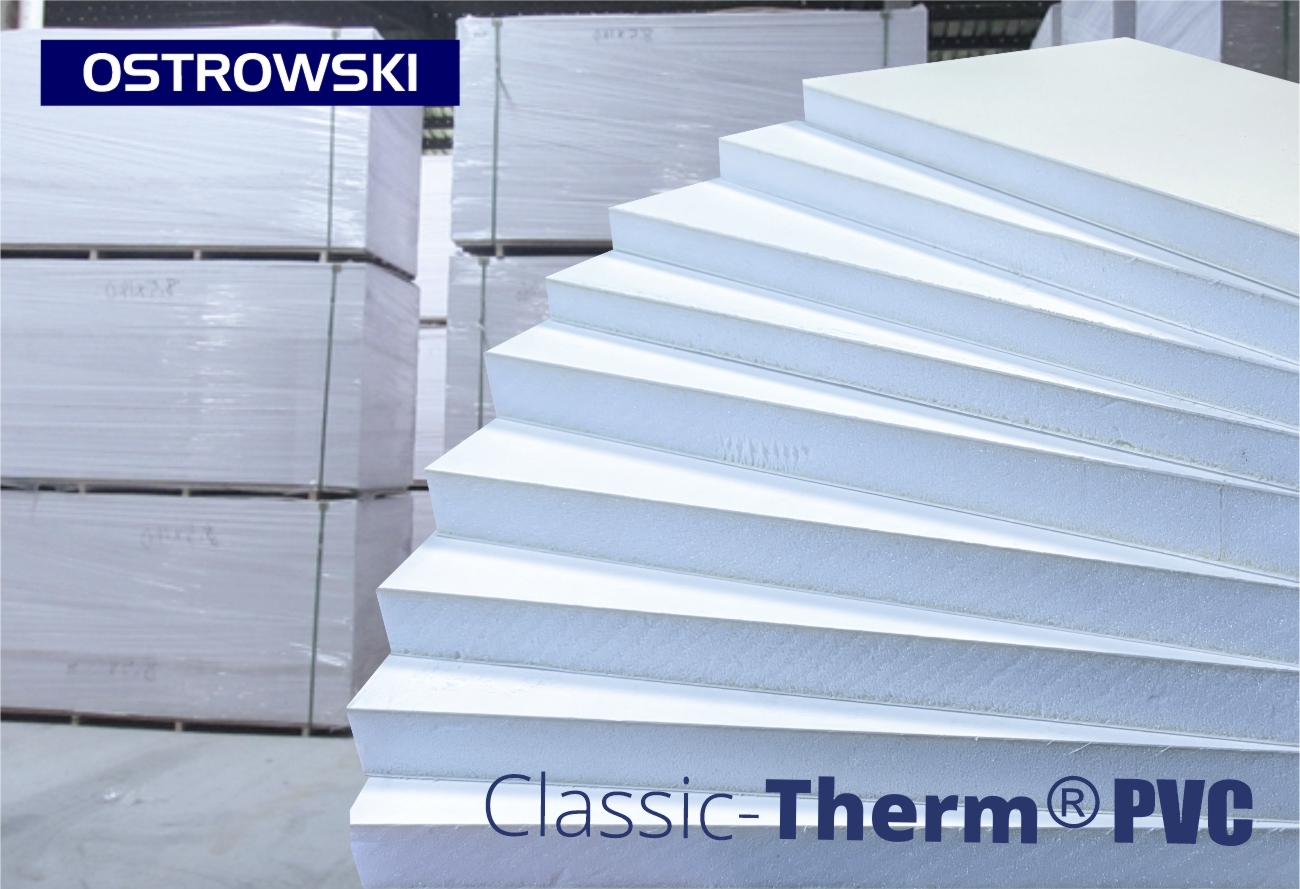Foamed PVC and hard PVC, also known as polyvinyl chloride, has been produced on a mass scale for almost 90 years, and the constant increase in demand for this raw material means that research is still being conducted to develop more effective methods of PVC production with even better performance properties. PVC plates are light and rigid, easy to mechanically work, so they can be molded to almost any shape. The foamed and hard PVC sheet is highly resistant to atmospheric factors such as low and high temperatures as well as to moisture.
Foamed PVC and hard PVC – production
Foamed PVC is made of polyvinyl chloride, using the free foaming method. As standard, the plates are available in white. However, it is possible to order panels in other colors according to the RAL palette. On the other hand, hard PVC is produced by extrusion. Finished products are usually colorless, gray, white or colored and have a hard and glossy surface.
PVC board and advertising
PCW panels are often used in the advertising industry for the production of internal and external advertising signs and boards, as well as information boards, decorations for shop windows, constructions for building exhibition stands, as well as for the production of spatial advertising structures. Foamed PCV offers many processing options. An imprint can be applied to the surface of PVC boards. The boards can also be varnished and covered with self-adhesive foil. You can transform them in a few steps, among others in three-dimensional structures, individual forms and decorations, while maintaining exceptional stiffness in relation to low weight. The processing of Classic-Viscom sandwich panels is extremely easy, and there are many possibilities, starting with knife cutting, drilling, cutting, notching, engraving or CNC milling.
Foamed PVC and hard in the construction sector
Every day, new homes, offices, stadiums and many other buildings are built around the world. The architectural challenge of these new constructions is that aesthetics and functionality match each other. PVC has long been one of the best choices for architects. This is due to the technical properties of polymers, which allow architects to combine the latest design with care for the environment. As a result, PCWis the most widely used plastic in the production of building materials such as: windows, pipes, gutters, cables, roofing membranes and floors. Interestingly, after a long period of use, these products can be recycled for new applications. One of the largest areas of application of foamed PVC and hard PVC in industry are window and door frame profiles, PVC door panels as well as mass-colored or veneered window panels (eg. Renolit).
Ostrowski PCV sandwich panels are manufactured for ex. as:
– PVC door fillings – Classic-Therm® click
– plates for advertising and printing – Classic-Viscom click
– PCW sandwich panels for winter gardens – Classic-Therm® click
– layer sealing installation – Profi-Therm click
Advantages of PVC over other materials
PVC is in many areas replacing traditional building materials such as concrete, wood and metals. The versatility and profitability of polyvinyl chloride make PVC currently the most important polymer for the construction sector, accounting for around 70% of European PVC production. Replacing PCW with other materials for environmental reasons would require additional research with no proven technical benefits and higher production costs. PVC, wood and aluminum are the main materials used in the manufacture of window frames. BFC evaluates windows sold on the British market according to their energy efficiency. PVC is the dominant material in the highest class (A), which indicates that the dominance results not only from a large market share, but also from the very good insulating properties of PVC window frames.
PCV packaging
PVC used in the production of packaging is flexible, light, transparent, durable and safe. It has excellent properties that do not affect the taste of packaged food. PCW requires less fuel to produce and transport compared to other packaging materials such as metal or glass. It also protects against contamination, helping to prevent the spread of germs during production and distribution – especially in the form of cling film. This, combined with the oxygen and water barrier, prevents unnecessary losses as it provides a longer shelf life for the food.
PVC recycling and the future
In Europe, new opportunities for recycled PVC products have been developed through the development of collection and recycling systems. An interesting example comes from southern Europe, where a company from the recycling and waste management industry has developed road traffic management devices made of recycled plastics, including PCW. Their most successful product is the traffic separator for cycle paths made of 100% recycled PVC. The PVC industry is rich in examples showing its dynamism, creativity and forward-looking plans for the continuous development and improvement of this raw material, which at the moment, due to production costs and very good thermal properties, remains one of the most-chosen materials in the industry.
We invite you to our FB profile: Ostrowski – Producer of Sandwich Panels
We also offer the production of sandwich panels made to special customer orders. If you have any questions about our product range, please contact us directly:
Sales representatives:
Kamil Nierychło ![]()
![]()
Sales Europe
email: k.nierychlo@ostrowski.eu
tel.: +48 508 312 910

